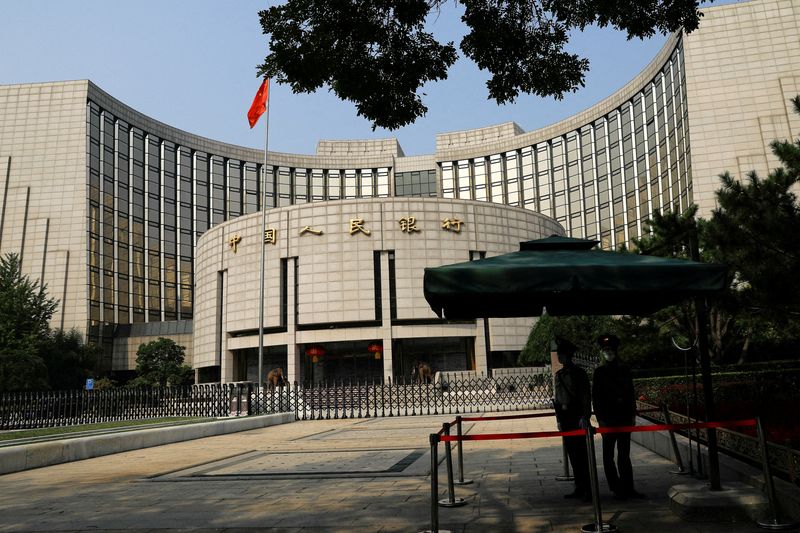SHANGHAI/SINGAPORE (Reuters) -China is expected to cut lending benchmarks at a monthly fixing on Monday, with many analysts predicting a big reduction to the mortgage reference rate to revive credit demand and shore up the ailing property sector.
The loan prime rate (LPR) normally charged to banks' best clients is calculated each month after 18 designated commercial banks submit proposed rates to the central bank, the People's Bank of China (PBOC).
In a poll of 35 market watchers, all participants predicted cuts to both the one-year LPR and the five-year tenor, after the central bank unexpectedly lowered the medium-term policy rate this week.
The medium-term lending facility (MLF) rate serves as a guide to the LPR and markets mostly use the MLF rate as a precursor to any changes to the lending benchmarks. The monthly fixing of the LPR is due next Monday.
Among the 35 survey participants, 19, or 54%, expected a 15-basis-point cut to the one-year LPR - on which most new and outstanding loans are based and is currently at 3.55%. The remaining 16 traders and analysts forecast a modest 10 bp reduction.
And 33, or 94% of them, predicted the five-year rate, which serves as the mortgage reference rate, to be trimmed by at least 15 bp. The five-year LPR currently stands at 4.20%.
"After the earlier than expected policy rate cut, we are penciling in a 10 bp cut in one-year LPR and 20 bp cut in five-year LPR to further shore up the property sector," Citi analysts said in a note.
They also expect the central bank to deliver a 25 bp to banks' reserve requirement ratio (RRR) cut soon.
Market expectations for further monetary easing follow economic data that showed tumbling credit lending and mounting deflationary pressure. Meanwhile, default risks at some housing developers have dented financial market confidence.
In response to a deepening property market crisis, the central bank pledged it would adjust and optimise property policies, according to its second-quarter monetary policy implementation report published this week.

"According to previous modus operandi of the PBOC, we should expect a symmetrical, outsized 10-15 bp cut to the one-year and five-year next week," said Carlos Casanova, senior economist for Asia at UBP.
"Looking forwards, we expect that the PBOC will also follow through with additional 50-75 bp in RRR cuts and balance sheet expansion to mitigate risks in key sectors, such as local government financing vehicle (LGFV) debt and regional housing markets."